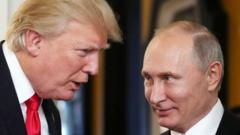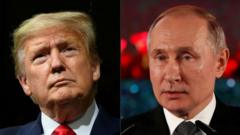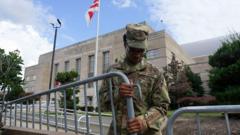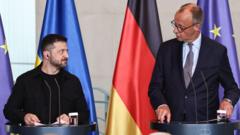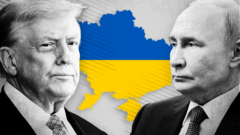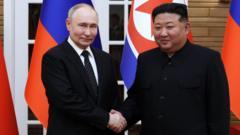In an unprecedented week of global engagements, President Trump undertook a flurry of diplomatic actions that signal a possible shift in U.S. foreign policy strategy, moving away from interventionism to a focus on trade and commerce. His actions included lifting sanctions on Syria, negotiating peace initiatives, and promoting economic partnerships, all while dismissing ideological concerns that previously shaped U.S. involvement abroad.
A Frantic Week of Foreign Policy Maneuvers: Trump’s Diplomatic Blitz
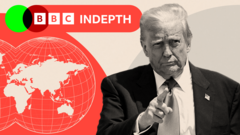
A Frantic Week of Foreign Policy Maneuvers: Trump’s Diplomatic Blitz
US President Donald Trump engages in a whirlwind of international diplomacy, raising questions about his foreign policy vision.
Considering his bold moves and volatility, this week illustrates both the potential and the chaos of having foreign policy heavily influenced by one man—raising questions among diplomats and officials about consistency, long-term strategy, and the possibility of real change in the complex global landscape.
Trump’s ambitious diplomatic strategy has left many astonished, with swift actions that include lifting sanctions on Syria and urging ceasefires in conflicts involving India, Pakistan, and Yemen. His administration’s approach has also involved trade negotiations with China, leading to lowered tariffs, which followed a cycle of escalating tensions. Critics argue that Trump's transactional focus on commerce over military support reflects a shift from prior U.S. commitments to democratic values and human rights.
Amid discussions of peace talks in Ukraine and new engagements with Iran, many see the absence of traditional diplomatic practices as alarming; unclear strategies indicate potential instability in U.S. influence. As the president navigates these complex international relationships, the fundamental direction of U.S. foreign policy remains up for debate—will it lean more towards mercantilism or continue to grapple with longstanding ideological conflicts?
Trump’s ambitious diplomatic strategy has left many astonished, with swift actions that include lifting sanctions on Syria and urging ceasefires in conflicts involving India, Pakistan, and Yemen. His administration’s approach has also involved trade negotiations with China, leading to lowered tariffs, which followed a cycle of escalating tensions. Critics argue that Trump's transactional focus on commerce over military support reflects a shift from prior U.S. commitments to democratic values and human rights.
Amid discussions of peace talks in Ukraine and new engagements with Iran, many see the absence of traditional diplomatic practices as alarming; unclear strategies indicate potential instability in U.S. influence. As the president navigates these complex international relationships, the fundamental direction of U.S. foreign policy remains up for debate—will it lean more towards mercantilism or continue to grapple with longstanding ideological conflicts?




